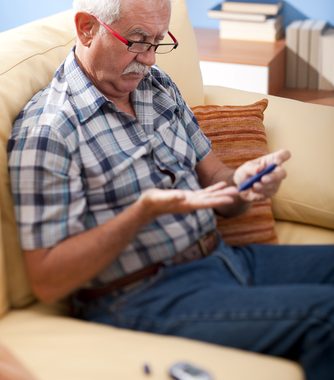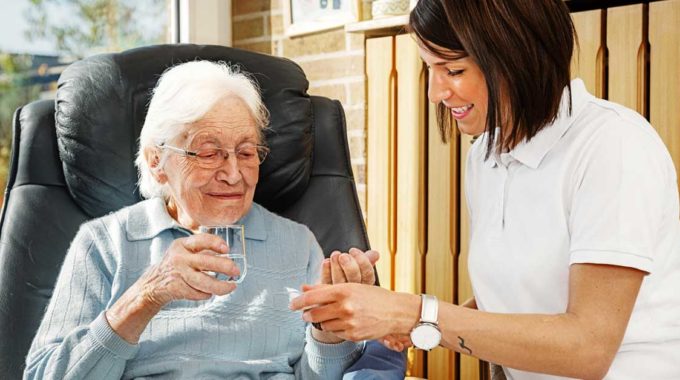
New Technology Helps Keep Home Care Patients Connected
As more seniors decide to stay at home during periods of diminished health, care services have developed to meet the unique needs of the home environment.
At the same time, technology has rapidly evolved and is helping to better connect those who receive home care services.
Combine the two and you have a compelling argument for more seniors to stay at home, even when ailments and reduced mobility limit their ability to look after themselves. Technology-based care solutions are always-on, connected 24/7, and can often delve deeper into the health condition of an unwell elderly patient. That’s because the monitoring that they offer is built-in and typically connected to cloud services, rather than a doctor or caregiver having to coax out the information.
This connectivity is at the heart of what makes home-based care tech so exciting, and why there is something of a race on among providers to integrate it into their service offerings.
Better Connected
The days of older people keeping new technology at arms length are largely in the past. Today’s retirees – and those approaching that age – are typically of the Baby Boomer generation or later, most of whom grew up with computers and associated tech of some kind. When Pac-Man is pushing 50, you know that even the age range we traditionally assume will be resistant to tech needs to be updated!
Screens and mobile devices are now the norm and far more intuitive for people of all ages, making the digital divide more of a personal choice than a generation-based gap. If someone doesn’t want to see more technology in their home, it’s probably because they have an individual distaste for that product or service.
What this means for those of us in the home health service sector is that many more seniors than ever before are willing and able to stay connected from the comfort of their own home. Not so long ago, if you wanted to closely monitor the health of someone with a vulnerable condition, it meant keeping them in overnight – or longer – at the hospital. That’s unsettling for both family and patient, as evidenced by the fact that repeated studies show seniors would rather receive care at home.
Thanks to cloud technology and the devices that send them data, the dream of staying at home is more of a reality for today’s seniors, who are becoming better connected with every passing year.
Wear Your Health On Your Sleeve
Or on your wrist, really, as that’s where wearable tech developments like fitness bands and smart watches are typically located.
These devices are just the tip of the iceberg in terms of wearable technology, but the applications are already there to connect patients at home with their medical professionals and caregivers.
Some of the health areas that such devices can monitor include:
- Heart rate
- Exercise levels
- Blood pressure
- Sleep patterns and quality of rest
- Medication schedules and reminders
One of the most attractive elements of these devices for caregivers and concerned family members is that they don’t have to coax the information out of the person they care for. After some basic initial set up – and as long as the individual is willing to wear the device consistently – the required data is simply delivered to an online platform that anyone with access can review. Reports can be pulled, daily e-mails and ad-hoc alerts set up, and a whole range of health data is suddenly available online.
After some basic initial set up – and as long as the individual is willing to wear the device consistently – the required data is simply delivered to an online platform that anyone with access can review. Reports can be pulled, daily e-mails and ad-hoc alerts set up, and a whole range of health data is suddenly available online. Apple’s CareKit is one of the latest to wrap up many of these functions in one package and offers a glimpse of what could come in future.
Even physical location can be monitored in more serious circumstances, for example if the patient has milder forms of dementia or another condition that would necessitate finding them at short notice.
All of these applications put wearables at the forefront of home care technology. They will continue to drive innovations that help seniors with medical conditions that need to be monitored to stay in their homes for longer.
Smart Homes Put Seniors in Control
In addition to monitoring health conditions, the daily business of simply living life can be a barrier to seniors staying at home safely. Products for those living with limited physical capabilities continue to flow onto the market, with technological advances opening up a whole new niche: smart home applications.
Smart home technology is still in its infancy, but the potential it holds for putting older people back in control of their home life is substantial. Essentially, it makes simple home activities like turning on lights or setting up security alarms a lot easier, adjustable from the comfort of an armchair thanks to mobile devices and installed apps.
Some of the current applications for smart home technology are as follows:
- Smart locks to automate opening, closing, and securing doors.
- Lights that can be adjusted,scheduled, and change color from the touch of an app.
- Security systems that unite smart locks, lights, and alarms, and can alert authorities when something is amiss.
- Thermostats that know when someone is home and learn personal temperature preferences.
- Carbon monoxide detectors that send alerts to authorities, as well as an alarm for anyone at home.
- Sprinkler systems to make lawn care easier, by scheduling activation or starting up on particularly hot days.
All of these uses are far earlier in development than wearable technology, so you should always review the suitability of specific products with caregivers and experts in the field. Nonetheless, each application could make life a little easier for the senior who wants to stay at home, while also offering a taste of what’s to come.
With so many companies vying for position in the home health technology space, it seems inevitable that the products and services on offer will expand rapidly from here on out.
We look forward to bringing you new developments on this front, especially those that help seniors to stay safe and secure in the environment they know best: their own home! Find a home health agency today!






